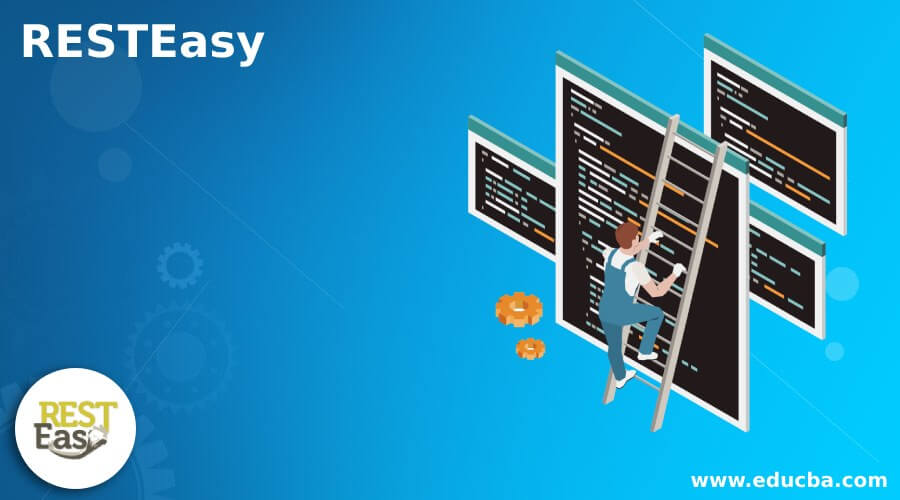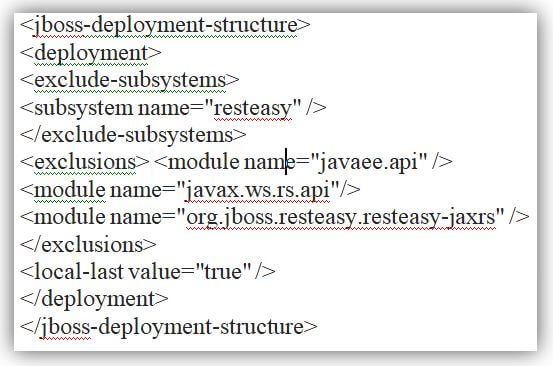Updated February 17, 2023
Introduction to RESTEasy
A new JCP specification, JAX-RS (JSR-311), offers a Java API for RESTful Web Services over the HTTP protocol. Any Servlet container can execute RESTEasy, a portable implementation of this specification. An implementation of the Jakarta RESTful Web Services API is called RESTEasy. It is simply a framework included within the JBoss EAP server to aid in developing RESTful Web Services. The JBoss Application Server is more tightly integrated with it but can be installed on any servlet container.
Key Takeaways
- Implementation of JAX-RS web services in Java application.
- Portable to any JDK 5 or higher-based app server or Tomcat.
- Implementation of an embeddable server for JUnit testing.
- Writing HTTP clients is made simple by the client framework.
- Use maven dependencies or jar files as per requirement.
- Easy, simple, and supportive development for a complicated web app.
What is RESTEasy?
Various frameworks are offered by the JBoss/Red Hat project RESTEasy to assist you in creating RESTful Java applications and RESTful Web services. The Java API for RESTful Web Services via the HTTP protocol is provided by the Jakarta RESTful Web Services specification, an Eclipse Foundation definition. Additionally, the MicroProfile REST Client standard API is implemented by it. Although RESTEasy can operate in any Servlet container, there are options for a closer connection with Quarkus and WildFly Application Server to improve the user experience.
RESTEasy Project Setup
We will think about two potential outcomes:
- Independent or Standalone Setup: Designed to operate on all application servers.
- Setup of JBoss: Only to take into account deployment in JBoss.
1. Standalone Setup
Let’s begin by installing JBoss WildFly 10 as a standalone application. Version 3.0.11 is included with JBoss WildFly 10, but we configured the pom.xml to use version 3.0.14. The ServletContainerInitializer integration interface from RESTEasy enables integration with standalone Servlet 3.0 containers.
File name: pom.xml:
Code:
<properties>
<resteasy.version>
3.0.14.Final
</resteasy.version>
</properties>
<dependency>
<groupId>
org.jboss.resteasy
</groupId>
<artifactId>
resteasy-servlet-initializer
</artifactId>
<version>
${resteasy.version}
</version>
</dependency>
<dependency>
<groupId>
org.jboss.resteasy
</groupId>
<artifactId>
resteasy-client
</artifactId>
<version>
${resteasy.version}
</version>
</dependency>JAR File:
Everything deployed as a WAR, JAR, or EAR within JBoss is a module. Dynamic modules are the name given to these modules. In addition, static modules can be found under $JBOSS HOME/modules. The “jboss-deployment-structure.xml” file is required to exclude some of the static modules JBoss offers for standalone deployment.
The following image shows the jboss xml (jboss-deployment-structure.xml) file.
2. Setup of JBoss
You can select to use the libraries that are already included in the JBoss 6 version or higher version, which will simplify the pom:
Code:
</dependency>
<dependency>
<groupId>
org.jboss.resteasy
</groupId>
<artifactId>
resteasy-jaxrs
</artifactId>
<version>
${resteasy.version}
</version>
</dependency>RESTEasy Application Class
You can implement the javax.ws.rs.core.Application class, which is a standard JAX-RS class, to provide details about your deployment:
File name: ResteasyDemo.java:
Code:
@ApplicationPath("/demos")
public class ResteasyDemo extends Application {
private Set <Object> singleton_variable = new HashSet <Object> ();
public ResteasyDemo() {
singleton_variable.add(new MovieCrudService());
}
@Override
public Set<Object> getSingleton_method() {
return singleton_variable;
}
}You can see that this class is just a collection of all JAX-RS root resources and providers that has the @ApplicationPath annotation.
The WAR will be checked for JAX-RS annotation resource and provider classes if you return any empty set for by classes and methods.
RESTEasy Server
Given below shows RESTEasy Server:
file name: web.xml:
Code:
<?xml version = "1.0" encoding = "UTF-8"?>
<web-app version = "3.0"
xmlns = "http://java.sun.com/xml/ns/javaee"
xmlns:xsi = "http://www.w3.org/2001/XMLSchema-instance"
xsi:schemaLocation = "http://java.sun.com/xml/ns/javaee http://java.sun.com/xml/ns/javaee/web-app_3_0.xsd">
<display-name>
RestEasy Demo App
</display-name>
<context-param>
<param-name>
resteasy.servlet.mapping.prefix
</param-name>
<param-value>
/demos
</param-value>
</context-param>
</web-app>Only if you want to prepend a critical path to the API app does resteasy.servlet.mapping.prefix need to be used. It’s crucial to note that because resteasy servlet-initializer has been included as a dependency in pom.xml, we haven’t declared any Servlets in the web.xml. The “org.jboss.resteasy.plugins.servlet.ResteasyServletInitializer” class from RESTEasy implements the “javax.server”, which is the reason for the ServletContainerInitializer. You can use the “ServletContainerInitializer” initializer to define your application’s servlets, filters, and listeners.
Features of RESTEasy
The following features provide resteasy to Java developers and application users:
- Use Java RESTful Web Services in web applications quickly.
- Versatile with Tomcat and numerous other app servers.
- JUnit testing with embeddable server implementation.
- Superior client framework for the web app.
- Customer “Browser” cache. Supports cache revalidation and other HTTP 1.1 caching semantics.
- Memory cache on the server. Local cache of answers. Automatically handles cache revalidation and ETag generation.
- XML, JSON, YAML, Fastinfoset, Multipart, XOP, Atom, and other providers are available.
- XML, JSON, Jackson, Fastinfoset, Atom, and Wrappers for maps, Arrays, Lists, and Sets of JAXB objects are all examples of JAXB marshaling.
- Encoding with GZIP.
- Servlet 3 abstractions for asynchronous HTTP.
- Rapid assistance for applications.
- Job Services in the Asynchronous format.
- Detailed interceptor model.
- JBoss AS7, OAuth2, and distributed SSO work with it.
- Support for digital signatures and encryption with S/MIME and DOSETA.
- Integration of Spring Boot, Guice, Seam, Spring MVC, and EJB framework.
FAQ
Other FAQs are mentioned below:
Q1. What is the purpose of the RESTEasy Jackson?
Answer:
For creating RESTful Web Services and RESTful Java applications, JBOSS offers RESTEasy, an implementation of the JAX-RS protocol. Although you can use this with other servers, it’s not just limited to JBOSS. Jackson is a Java library with many uses for handling JSON data types. For developers, Jackson strives to be the ideal blend of quick, accurate, light, and ergonomic.
Q2. What RESTEasy version is offered by JBoss EAP?
Answer:
JBoss EAP 6.1 includes Resteasy. In JBoss EAP 6.1, you’ll probably need to upgrade Resteasy. The zip file resteasy-jboss-modules-3.0 is included in the distribution.
Q3. What is a client for RESTEasy?
Answer:
You can utilize the client proxy framework provided by RESTEasy to call on a remote HTTP resource using JAX-RS annotations. The process entails writing a Java interface, annotating methods, and a JAX-RS interface.
Conclusion
It is one of the frameworks of the Jax-rs web services. It uses for creating complicated apps with many functionalities and functions. It helps to create web services for operations and maintain interactive user data.
Recommended Articles
This is a guide to RESTEasy. Here we discuss the introduction, RESTEasy project setup, application class, features, and FAQ. You may also have a look at the following articles to learn more –


